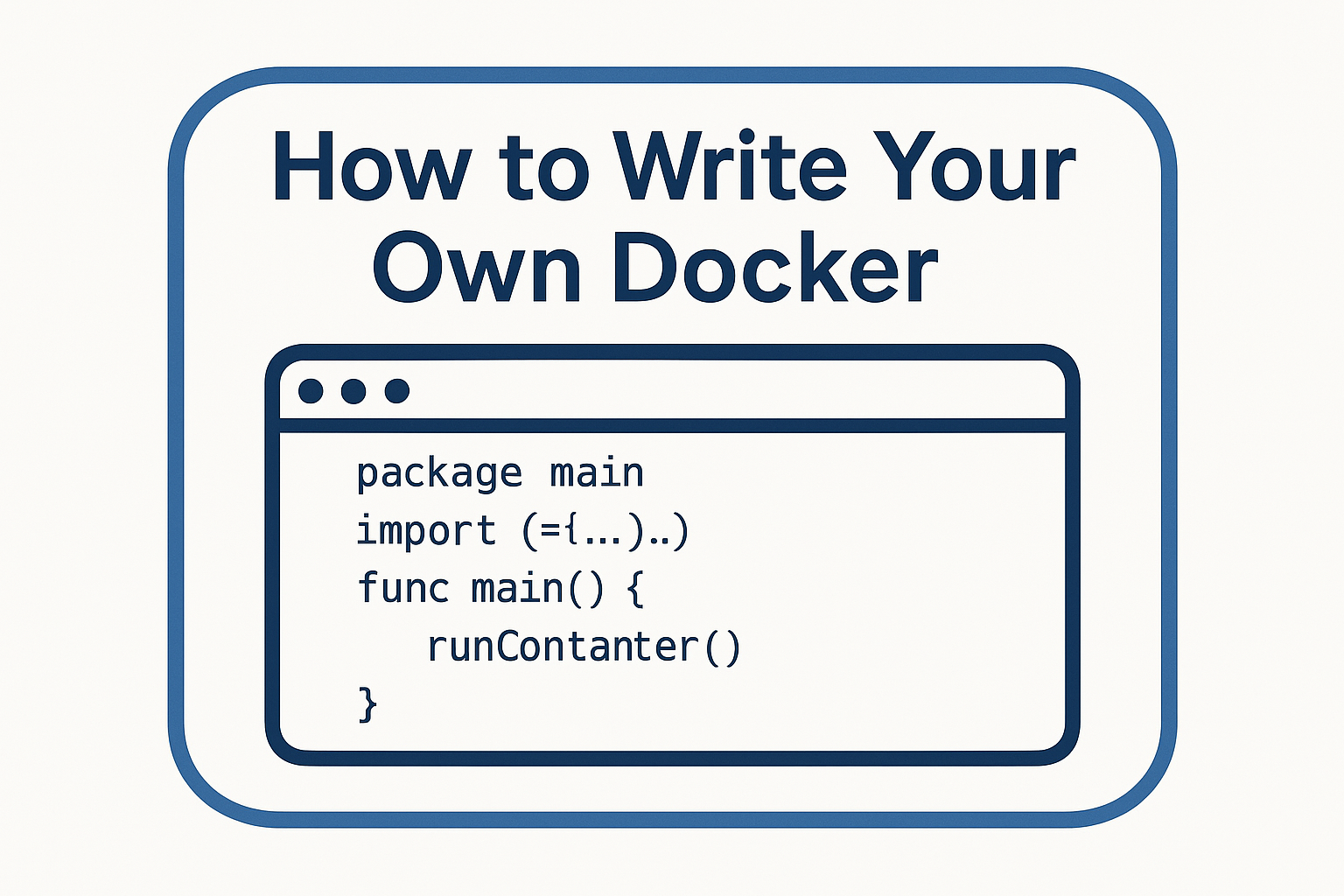How to write your own Docker
How to write your own Docker
Containers have revolutionized how we build and deploy applications, but have you ever wondered what lies underneath? In this article, we’ll explore how to write your own simple container using Go. We’ll demonstrate that at its core, a container is essentially a chroot environment combined with cgroups and namespaces, making it lightweight yet powerful.
What is a container?
At its heart, a container isolates an application from its host system. This isolation is achieved using Linux namespaces and cgroups. The idea is simple: restrict the application to its own view of the filesystem, processes, and network. In essence, you’re setting up a mini operating environment that runs a single process or application.
Why Build Your Own Docker?
Writing your own container from scratch is an excellent exercise for understanding how containers work under the hood. It demystifies the abstraction layers provided by container engines like Docker and offers insights into how namespaces, cgroups, and chroot environments contribute to process isolation.
While production container runtimes are highly optimized and include many more features, this simple example provides a solid foundation for grasping the basic concepts.
Building a simple container in Go
The following Go code is a minimal example that mimics the behavior of a container runtime. It uses the Go standard library to execute a process within a controlled environment. Although the code is basic and omits advanced features like cgroups or sophisticated resource management, it gives you a clear picture of the underlying concept.
The Code
Below is the prepared code snippet for our simple container:
1
2
3
4
5
6
7
8
9
10
11
12
13
14
15
16
17
18
19
20
21
22
23
24
25
26
27
28
29
30
31
package main
import (
"fmt"
"os"
"os/exec"
)
func main() {
switch os.Args[1] {
case "run":
runContainer()
}
}
func runContainer() {
cmd := exec.Command(os.Args[2], os.Args[3:]...)
cmd.Stdin = os.Stdin
cmd.Stdout = os.Stdout
cmd.Stderr = os.Stderr
cmd.Env = []string{"PS1=[d-container]# "}
// adding linux namespaces (only works on linux, not osx)
// cmd.SysProcAttr = &syscall.SysProcAttr{
// Cloneflags: syscall.CLONE_NEWUTS | syscall.CLONE_NEWPID | syscall.CLONE_NEWNS,
// }
if err := cmd.Run(); err != nil {
fmt.Println(err)
os.Exit(1)
}
}
Running the Example
You can now run the example using the following command:
1
go run main.go run /bin/bash
This command compiles and executes the Go program, running /bin/bash inside your minimal container environment. Notice how the prompt is changed to indicate that you’re inside the “d-container.”
How It Works
Command Line Arguments:
The program expects a command-line argument. When run with run, it calls the runContainer function to start the containerized process.
Executing the Container:
The runContainer function uses exec.Command to start a new process. Standard input, output, and error are attached to allow interactive usage. Additionally, the environment variable PS1 is set to mimic a shell prompt inside the container.
Namespaces and Isolation:
Although commented out in the snippet, Linux namespaces (using syscall.SysProcAttr) can be enabled. Namespaces provide isolation for the container by creating separate instances of the host’s global resources. By using flags like CLONE_NEWUTS, CLONE_NEWPID, and CLONE_NEWNS, the process gets its own hostname, process IDs, and filesystem namespace, respectively. This is what fundamentally separates a container from a regular process.
Chroot and Groups:
In more advanced implementations, you might also use chroot to change the apparent root directory for the process, further isolating the filesystem. Additionally, setting group IDs can help in managing user permissions within the container environment. Our simple example does not cover these in detail, but they are the building blocks of container security and isolation.
Understanding cd vs. chroot in Linux
At the heart of containerization lies the concept of isolating filesystem views. In Unix systems, each user has a current directory and a root directory. The cd command is used to change the current directory (u_cdir), while the chroot command changes the root directory (u_rdir). Below is a simplified example in C that demonstrates the basic difference:
The cd implementation (simplified)
1
2
3
4
chdir()
{
chdirec(&u.u_cdir);
}
The chroot implementation (simplified):
1
2
3
4
5
chroot()
{
if (suser())
chdirec(&u.u_rdir);
}
The User Structure in Unix
1
2
3
4
5
6
7
struct user
{
...
struct inode *u_cdir; /* pointer to inode of current directory */
struct inode *u_rdir; /* root directory of current process */
...
}
In this example, the chdir function simply changes the pointer to the current directory (u_cdir). On the other hand, chroot changes the root directory (u_rdir), but only if the process has superuser privileges (suser()). Essentially, while cd moves you around within your current filesystem, chroot changes the base of the filesystem hierarchy for the process, isolating it from the rest of the system.
In Unix Version 7, this is essentially all the chroot code—apart from the syscall list and additional userland support required to call chroot from a shell.
Conclusion
Writing your own container runtime, even a simple one like this, is a great way to understand the inner workings of containerization. By combining basic Linux features such as chroot, namespaces, and process isolation, you can see that containers are not a complex magic but rather an elegant orchestration of existing Unix mechanisms.
Experiment with this code, extend it further with proper namespace isolation and cgroup management, and explore the depths of container technology. Happy coding, and enjoy your journey into building your own Docker-like container!
